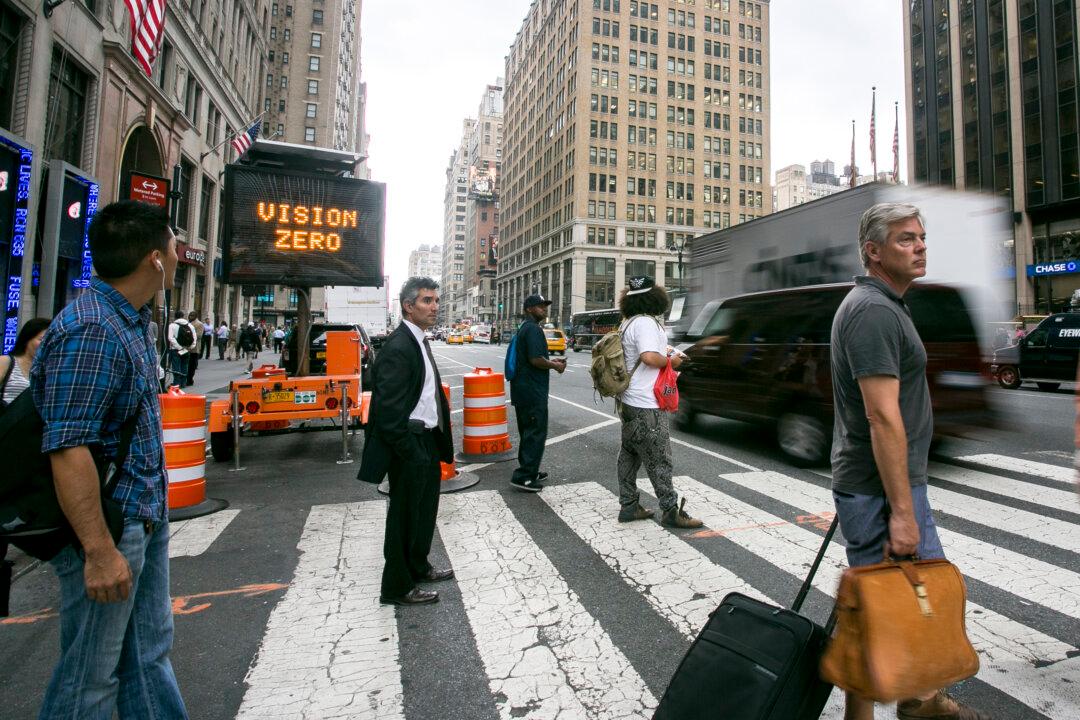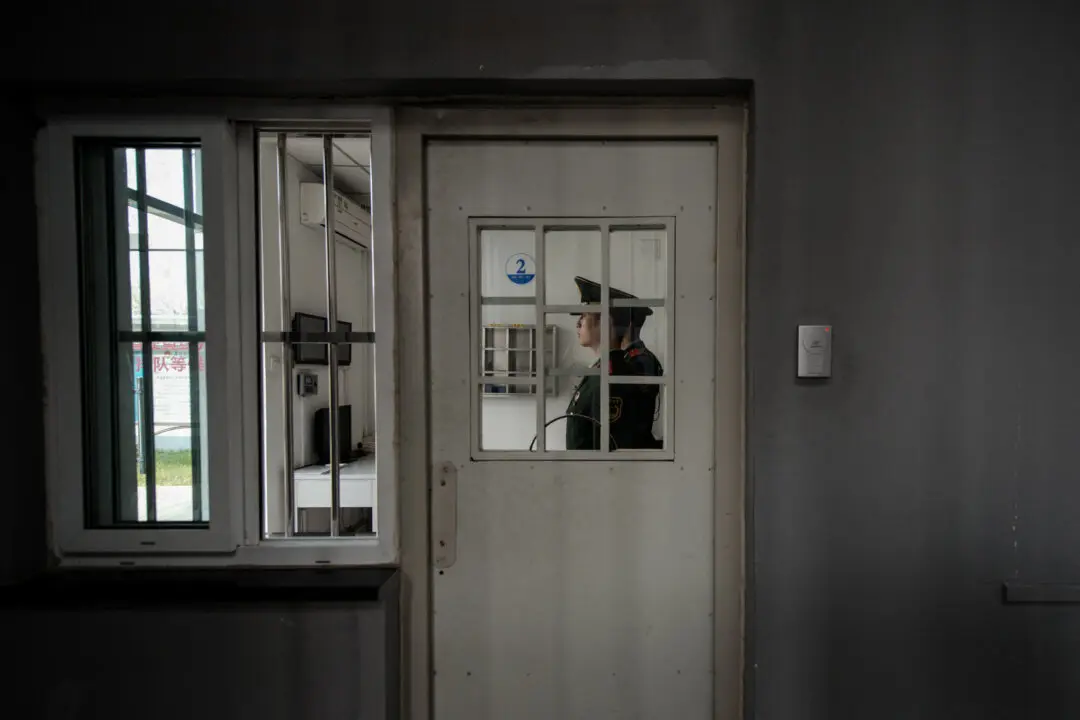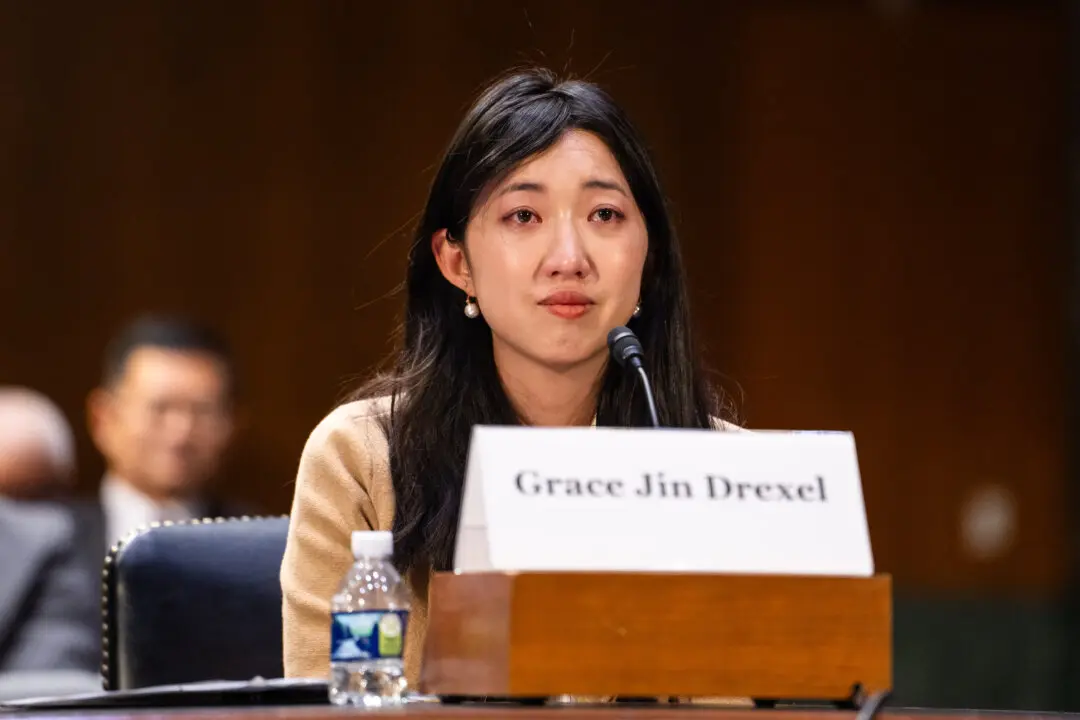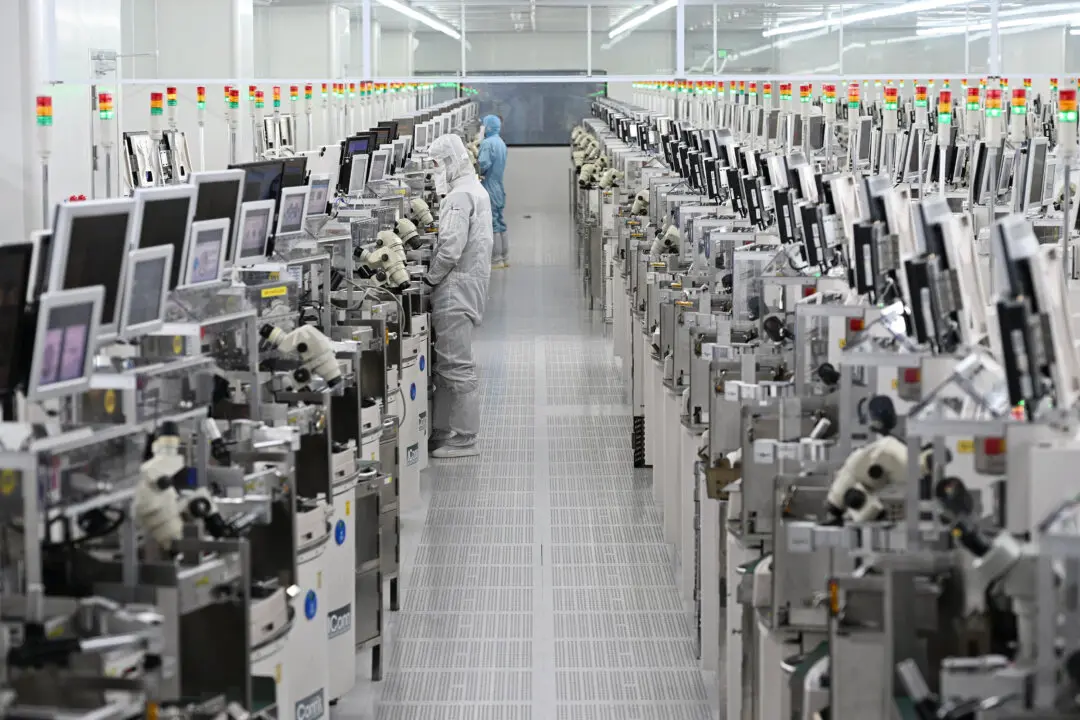NEW YORK—When Mayor Bill de Blasio announced in February his multi-agency 63-point Vision Zero initiative to lower traffic fatalities to zero, he proclaimed the strategy was to use enforcement, education, and engineering.
But Vision Zero couldn’t rely solely on the work of city agencies altering infrastructure; there would need to be a change in culture, he said.
“It’s also about all of us taking greater responsibility,” de Blasio said. “Every time we get behind the wheel and every time we step out on the street, our lives are literally in each others’ hands.”
He gave the announcement at an elementary school one block away from the deadly 96th Street and Broadway intersection where, a month before, three pedestrians were killed in the span of a couple of days.
Six months later, pedestrians and drivers who use the intersection both say the difference is like night and day—though most have never even heard of Vision Zero.
Changing the Lights
“It’s made the traffic much better,” said Kenn Morton, a commercial driver, of the signal changes at the 96th Street intersection.
Morton now has to loop around and drive a few extra blocks, where earlier this year he could just make a left turn—which is a hassle, he said, but he no longer feels like a crash could happen at any moment. Vehicular traffic seems more streamlined, and pedestrians seem to be jaywalking less. He had no idea what Vision Zero is.
In late January, the Department of Transportation proposed a series of street improvements to be completed in the spring. Lights were re-timed, countdown clocks were added at each crossing, and southbound left-turns were no more.
“It’s much easier to cross the street now. It’s a lot better, and safer,” said Sherrylann Benjamin, a nanny who takes walks in the area almost daily.
Santosh Saha, a manager at a grocery store a block away, was also unfamiliar with the street safety initiative, but knew of the fatal crashes and traffic problems from earlier in the year.
“Traffic patterns have completely changed,” Saha said. “And I think people are more careful when they’re crossing the street.”
While the Vision Zero plan is virtually unknown to the pedestrians and drivers in the area, they distinctly feel a behavioral change resulting from the intersection signal changes.
Vision Zero
Vision Zero began in Sweden, in 1994, with the core philosophy of expecting human error.
“The Vision Zero starts with a statement: we are human and we make mistakes,” reads the Swedish Vision Zero initiative website. Humans are not designed for high-speed travel, the site explains, yet it happens, so there is a need to factor human fallibility into an effective road design.
There are several ways to design away bits of human error: it feels more natural to speed on a wider eight-lane road than a narrow one-way, adding protected medians to the road prevents crossing in the middle of the block, countdown clocks dissuade pedestrians from starting to cross the street too late and getting caught in the middle when the vehicles start moving, and protected bike lanes can keep cars and bikes from colliding.
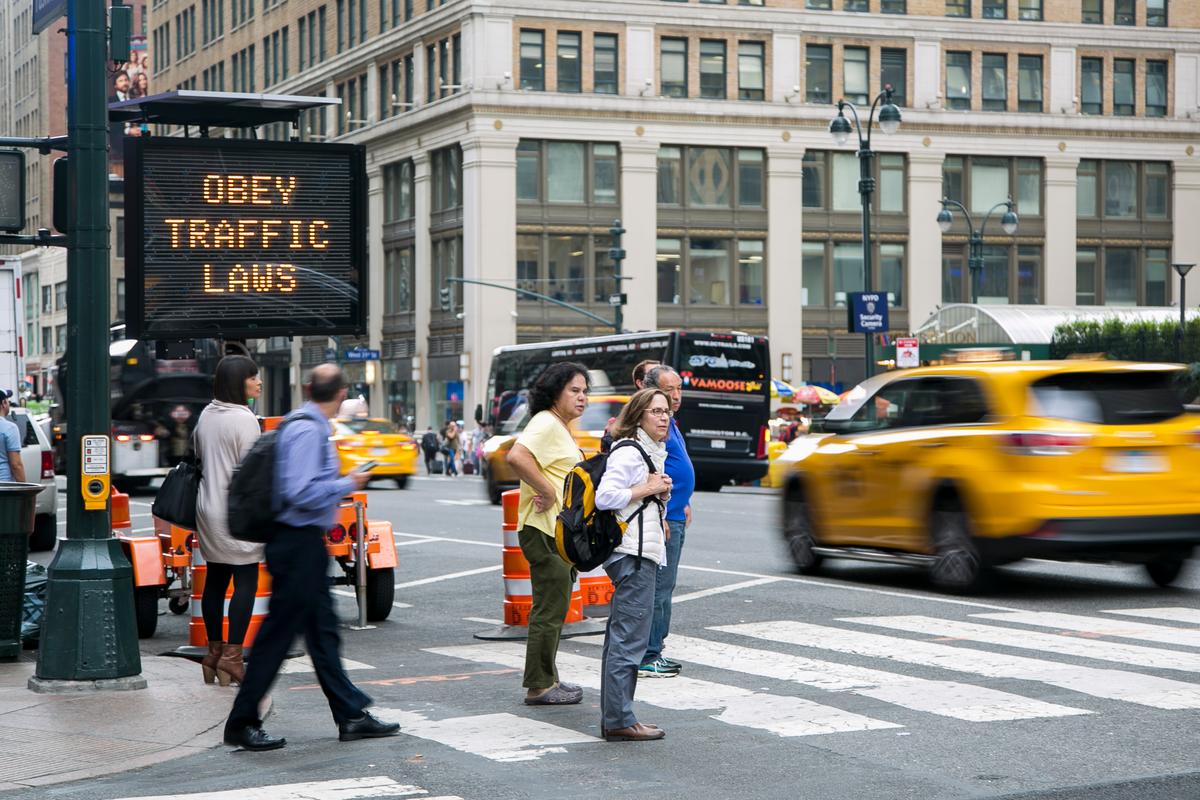
A digital board displays safety messages in front of Penn Station in Manhattan, New York, Sept. 10, 2014. (Samira Bouaou/Epoch Times)
About half a year after the New York City Vision Zero was set in motion, overall traffic fatalities are down by almost 8 percent. Pedestrian deaths have decreased by about 20 percent (from 103 to 81), but cyclist fatalities have doubled (from 8 to 16) according to city numbers.
In terms of enforcement, ticketing is up in almost all of the city’s police precincts though it varies widely precinct by precinct. Fifteen bills and resolutions relating to traffic safety have been signed into law, many going into effect this fall.
With engineering, DOT has at least 35 street redesign projects in the works with requests from local officials and groups for more, in addition to other projects like new bike infrastructure and slow zones.
On the education front, Public Service Announcements, fliers, and training for professional drivers were among the first initiatives to roll out; but it is still not uncommon for someone to sense no need for change at the street level and know nothing about the initiative for safer streets.
In New York City, pedestrians don’t cross when the light changes; they cross when it looks like oncoming traffic is not imminent. At familiar intersections, they know when cars will slow to a stop even before the crosswalk signal indicates it’s time to cross.
“Amazingly, yeah, everyone is jaywalking everywhere,” said Kim M. from Indiana, who was visiting the city for a few weeks with her daughter. She has walked through many neighborhood in Manhattan, and it feels easy to follow the crossing crowds. “It feels safe, any time of the day.”
Lenny Amato is from Suffolk County. He was transferred to work in New York City almost a year ago, and says the roads have been a culture shock. He drives on Atlantic Avenue every day, and sees that pedestrians cross whenever and wherever, even on busy thoroughfares.
“I think it’s crazy,” Amato said. “You never know when someone is going to come out of nowhere. It’s very stressful.”
Distractions
Design is not enough, said Matt P. from Park Slope, who has worked in Emergency Medical Services (EMS) for 32 years.
“Even at 25 mph, accidents occur so quickly,” he said. Working so closely to those who are injured or killed in, or cause traffic collisions, Matt says he closely watches Vision Zero’s progress, and any changes on the street level in his neighborhood.
Signals can be changed, speed limits lowered, and more tickets handed out, but the bottom line is the need for every person on the road to be cognizant of those around them in order for the city to achieve Vision Zero, according to Matt.
Distractions come in many forms, but most often he sees people speeding on Atlantic Avenue, a major thoroughfare that spans Brooklyn and Queens, with their phones out—texting, taking a call, navigating. With these distractions, they may not realize they are speeding, or may not be able to react to those around them.
“Just put the phone down,” he said. “You either respect the fact that you could hurt someone, or you don’t.”
Cultural Change
Much of the education has come from advocacy groups, and officials have credited the shift in safety culture on New York City’s streets to grassroots efforts. City agencies have also done educational campaigns, and the Taxi and Limousine Commission recently held a ceremony for the city’s safest drivers, taking a new approach to reward good behavior.
Larger groups like Transportation Alternatives have grown tremendously in influence over the years by providing education through community-building workshops and compiling information. But in the past year alone, several neighborhood organizations have sprung up, spurred by personal tragedies.
“The momentum has been tremendous,” said Laura Newman, who bikes, walks, and drives, and last year joined the organization Make Queens Safer.
Newman primarily bikes, and crosses the Queensboro Bridge on 59th Street into Manhattan several times a week. On the street level, it’s hard to discern any sort of change, she said, but little by little people are becoming more aware.
For instance, in her own community in Jackson Heights, through the Make Queens Safer gatherings, residents who use any and all modes of transportation say they’ve realized they need to be more careful and considerate of others on the road. Through targeted enforcement efforts, those being ticketed realize they need to be more conscious of the rules, she said, bicyclists included.
“There’s now a sense of community instead of pointing fingers,” Newman said. As a cyclist, Newman remembers they used to be treated as an outside group. Now there is more support, which in turn has made many cyclists realize they have to take responsibility to create safer streets as well.
“Infrastructure has to support the changes or people won’t feel welcome to [use the streets] ... but everybody plays a role,” Newman said.
